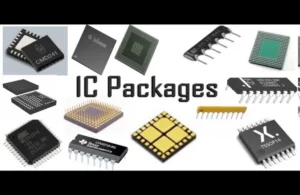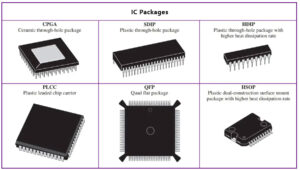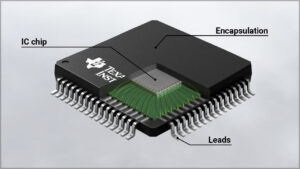Introduction
Several decades ago, Apple embarked on a transformative journey that significantly impacted not only its own products but also the entire technology sector. The origins of Apple Silicon trace back to the company’s earliest days. Initially, Apple relied on external suppliers for key components. For instance, the MOS Technology 6502 chip powered the Apple I, although co-founder Steve Wozniak played a significant role in designing other essential hardware components.
Throughout its evolution, Apple invested in innovation and secured numerous patents. However, the company’s reliance on external chip manufacturers, such as Motorola and later Intel, for the crucial CPU components remained a constant.
This dependence on suppliers led to potential challenges, including delays in product shipments and agility constraints, which impacted Mac sales negatively.
It became evident that Apple’s co-founder and CEO, Steve Jobs, envisioned a different path, one where Apple would have more control over its core technologies, minimizing dependence on competitors for essential components.
The prelude to Apple Silicon
Before Steve Jobs returned to Apple in 1997, the company had engaged with Advanced RISC Machines, later rebranded as Arm Holdings PLC, to create a chip for the Newton handheld device. However, Jobs made the decision to discontinue the Newton upon his return as CEO, despite protests from PDA enthusiasts.
Fortunately, Arm had another opportunity to collaborate with Apple on the iPod project. This project required the lead, Tony Fadell, to find a chip supplier specializing in high-efficiency, low-power chips. The first iPod, released in late 2001, utilized a Portplayer PP5502 system-on-a-chip (SOC) with dual Arm processor cores.
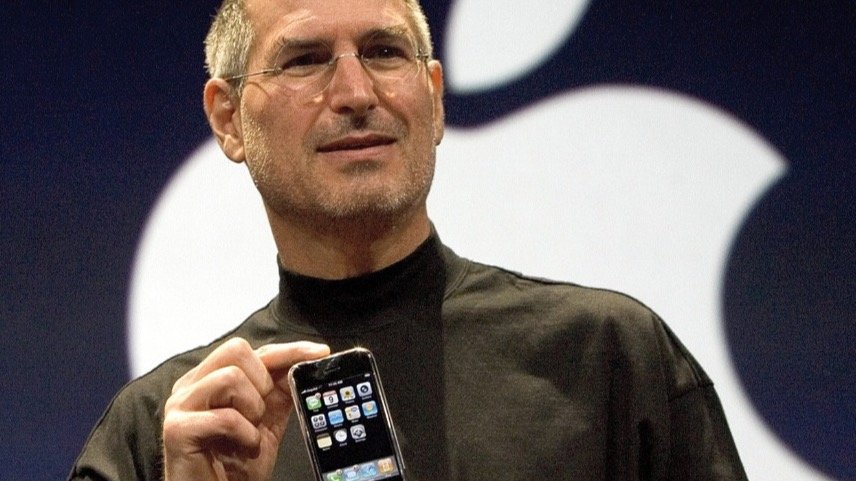
Subsequently, Apple employed Arm-based SOC chips designed by Samsung for the original iPhone. Additionally, Apple acquired shares in Arm and strengthened its partnership with the company.
Read more Can ARM processors Dethrone x86 king or Will they Learn to Coexist? – techovedas
Moving towards independence
In 2008, Apple began the journey of creating its own chips by acquiring P.A. Semiconductor and publicly announcing its intention to design chips for its iPhone and iPod. This move troubled Samsung and Intel, who wanted to maintain their roles as Apple’s chip designer and fabricator.
Although Samsung initially produced chips for the iPhone, Apple introduced its own A4 chip in 2010 and later partnered with TSMC for fabrication.
By utilizing Arm’s architecture, Apple gained control and flexibility in chip design, giving the company an edge over competitors. This level of integration between hardware and software allows Apple to optimize its devices’ performance, which is a challenge for other manufacturers.
While Google has started designing its own chips for Pixel smartphones, Samsung still relies on non-customizable Qualcomm chips for its mobile devices, unlike Apple, which has the ability to customize its chips to closely align with its software and hardware innovations.
Read more 4 Major Tech Giants and Their Custom AI Chips – techovedas
On to the Apple Silicon Mac
In 2012, rumors surfaced about Apple introducing Arm-based, Apple-designed chips into its Mac notebook line. By 2018, many smartphones and even Microsoft had adopted Arm architecture.
In 2019, Apple indicated its intent to move away from Intel chips for Mac, with CEO Tim Cook announcing the transition to Apple Silicon chips at WWDC in June 2020.

The first M1 Macs were released in November 2020, followed by the Mac Pro with the M2 Ultra chip in June.
Users responded very positively to the M1 Apple Silicon Macs, praising the huge boost in speed and power that the line brings compared to the Intel-based machines of 2020. Intel and AMD have worked hard to catch up, but Apple Silicon is now the new benchmark by which other machines are measured when it comes to consumer machines.
Read more Apple Releases the New 13- and 15‑inch MacBook Air with the Powerful M3 chip – techovedas
How Apple Silicon keeps its competitive edge
Since the M1, Apple fans have gotten used to routine double-digit improvements every year or so. Both in comparing the most recent base M-class chip to its successor and in comparing each variant to the one below it, and then again when a new set shows up.
It can’t last forever, but Apple’s ability to design chips perfectly customized to its own hardware has proven to be a major advantage.
Apple’s machines can maintain the same high speeds in the MacBook line regardless of whether the machine is on battery or mains power. Most PC laptops only run at their best speed when plugged in, with noisy fans blazing.
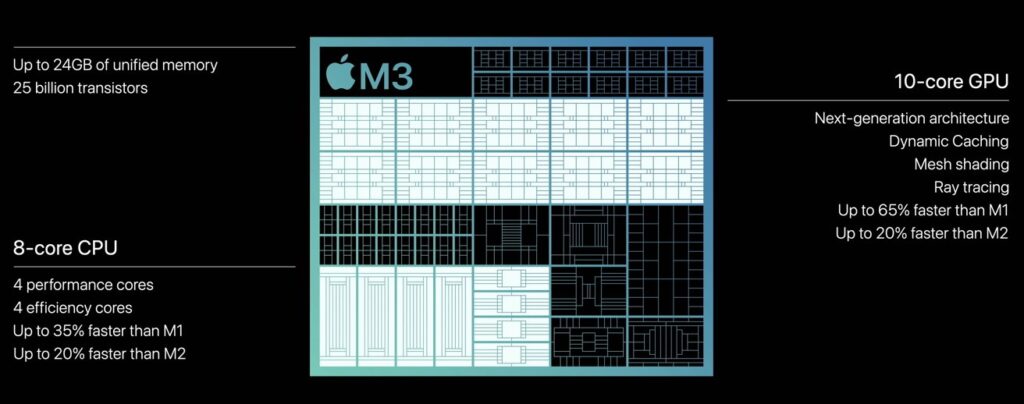
Apple Vs Qualcomm’s chips
Credit should be given to other chipmakers who have made heroic efforts — albeit not entirely successful — to catch up. Qualcomm, for example, has brought out the Snapdragon 8 Gen 3, which aims to take on the A17 Pro used in the iPhone 15 Pro and Pro Max.
This is fine, except for the fact that the iPhone 16 will be coming out in the fall, with a new chip that will likely continue the now-tradition of double-digit increases. In particular, we’ll note that GPU performance in the M3 has increased 50 percent over the M1 in just three years.
Apple’s other big advantage, especially in portable devices is energy efficiency which leads to world-beating battery life.
The Snapdragon 8 Gen 3 features seven CPU cores with a mix of performance and efficiency cores, similar to Apple’s approach. Snapdragon 8 Gen 3’s graphics are handled by the Adreno 750 GPU.
The improvement in the Snapdragon chip from its predecessor is truly impressive. But, in post-release benchmarks, Qualcomm’s so-called Apple-beater doesn’t quite live up to the hype.
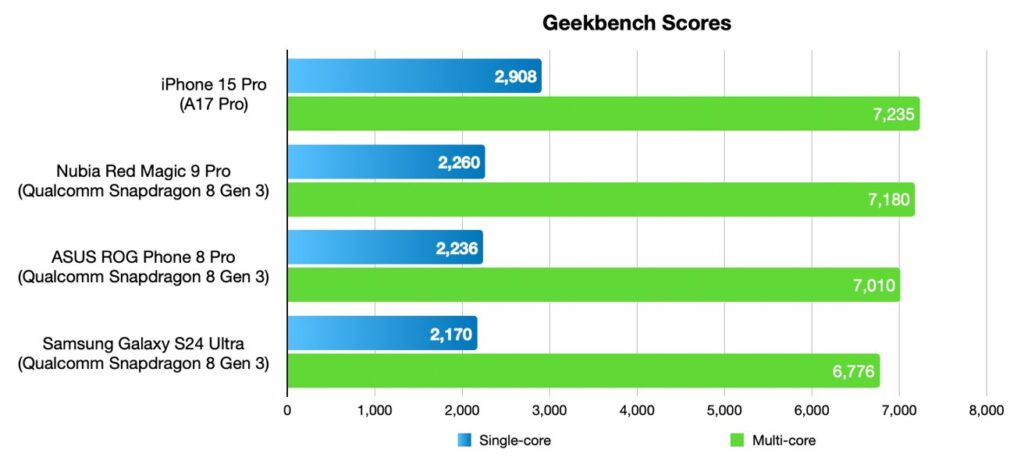
Geekbench single-core and multi-core results for new devices like the Nubia Red Magic 9 Pro, the ASUS ROG Phone 8 Pro, and the Samsung Galaxy S24 Ultra get close to what the A17 Pro offers in terms of single-core and multi-core processing. Except “close” is not good enough.
A bright future
It’s easy to throw massive amounts of power at a chip to make it more performant. It’s still astonishing that Intel, AMD, and now Qualcomm’s very best consumer-grade desktop and laptop chips struggle to break even with Apple Silicon at the same power-sipping levels.
The M3 typically surpasses them all in single-core tests, and Apple’s current chips already come in a very close third to Samsung and Qualcomm’s current chips in AI and Machine Learning benchmarks.
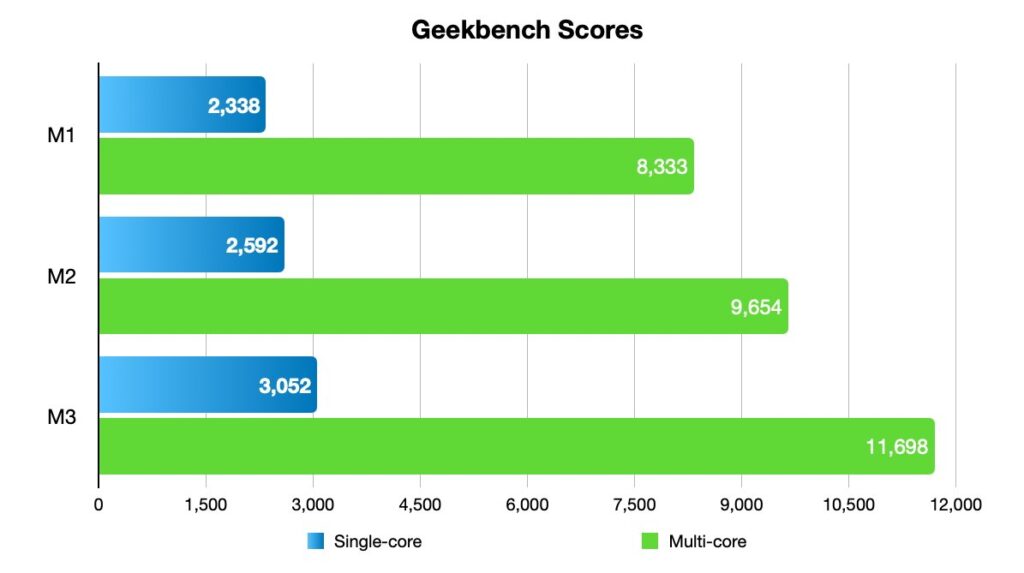
And all of this is before the big AI/Machine Learning boost we expect in the A18 Pro and M4 chips. It’s worth repeating that Apple accomplishes all this while offering significantly superior battery life — vital for smartphone and notebook users — and in nearly all cases, the same level of performance on the battery as when plugged in.
Introducing the M4
Apple is anticipated to unveil the next-gen M4 chip at WWDC, with a rumored larger Neural Engine and AI enhancements. The M4 lineup may include a base variant named “Donan” for entry-level Macs, a Pro variant known as “Brava,” a Max version for the Mac Studio, and an Ultra variant, likely named “Hidra,” for the Mac Pro.
These chips are expected to offer significant processing boosts through AI upgrades and will likely be built on a 3nm process.
Follow us on Linkedin for everything around Semiconductors & AI
Conclusion
The collaborative efforts of visionaries like Steve Jobs, Tony Fadell, and the dedicated team at Apple have propelled the tech giant to new heights with the successful integration of Arm-based chips. Evolution from the days of Newton and iPod to the present has solidified Apple as an industry leader setting high benchmarks. The optimistic outlook of Apple’s hardware developers, coupled with the customization opportunities presented by designing custom chips, hints at a future filled with groundbreaking innovations across all Apple devices. This journey symbolizes a remarkable synergy between Apple and Arm, with advancements in performance and battery efficiency shaping the landscape of consumer technology for years to come.


